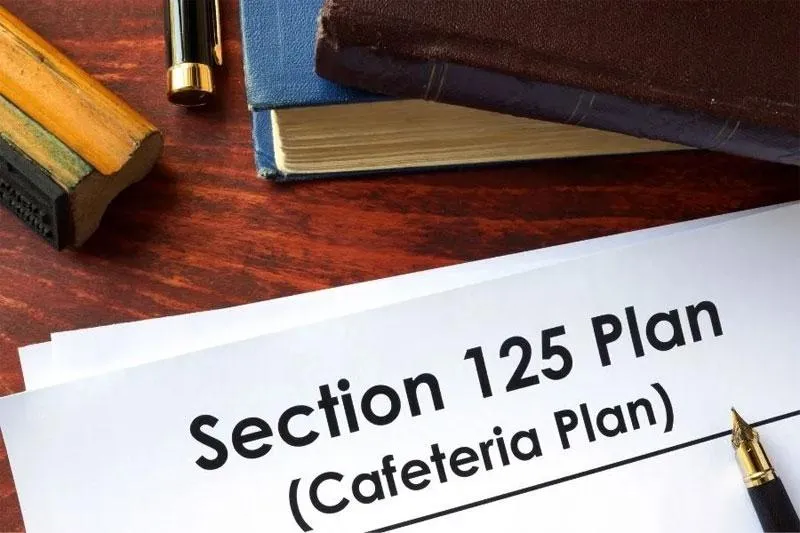A Detailed Look AT Section 125 Cafeteria Plans

An employee benefits program known as a Section 125 Cafeteria Plan allows workers to cover qualified expenses before taxes are deducted from their paychecks—an arrangement that provides substantial tax benefits, for both employers and employees alike.
What is a Section 125 Cafeteria Plan?
An employer’s Section 125 Cafeteria Plan offers workers a range of benefits – some non-taxable – giving them the flexibility to personalize their benefits package according to their unique requirements and preferences.
Employees have the opportunity to set aside a portion of their salary before taxes for benefits under this program This helps lower their taxable income and reduces their federal income tax as well, as Social Security and Medicare contributions as a result.
Essential Elements of a Section 125 Plan
An effective Cafeteria Plan should offer both benefits like cash and non-taxable benefits such as health or vision insurance premiums and other options like Flexible Spending Accounts (FSAs) Health Savings Accounts (HSAs) Dependent Care Assistance Programs group term life insurance and support, for adoption.
In a Cafeteria Plan set up, individuals can save an amount on taxes by participating in the program. By making contributions before taxes are deducted from their income employees can reduce their earnings and potentially save, between 20 to 40 percent on federal, state, and local taxes related to the benefits they choose. Furthermore, the ability to choose from a variety of benefits not only enhances job satisfaction but also supports better financial planning.
Advantages For Employers
Employers can also gain advantages from putting a Section 125 Plan into effect.
• Decreasing Payroll Taxes; Employers can lower their FICA tax responsibilities by allocating a portion of employee pay to the cafeteria plan.
• Improved Retention Strategy; Having a rounded benefits package is crucial, for attracting and keeping top-notch employees.
• Cafeteria Plans can boost employee morale and job satisfaction by offering flexibility and tax savings leading to increased employee happiness and contentment in the workplace.
Structuring a Cafeteria Plan
• Employers need to adhere to guidelines when setting up a Cafeteria Plan.
• Create a written plan document that clearly outlines the advantages offered along, with eligibility requirements and contribution limits.
• Employers need to let eligible employees know all the specifics of the plan and give them a chance to sign up for it.
• At the time they need to run tests to make sure the plan is fair and doesn’t show any bias, towards highly paid or key employees.
• Collaborate with a third-party Administrator; Lots of companies team up with third-party administrators to make sure they follow IRS rules and handle plan management efficiently.
Varieties of Section 125 Plans
• Exclusive Premium Plans (EPP); These specialized plans enable employees to cover their portion of insurance premiums using tax funds—a mutual advantage, for employers and employees.
• Flexible Spending Accounts (FSAs) allow employees to allocate tax funds for eligible medical or dependent care costs prior, to tax deductions being applied.
• Comprehensive Plans with Flexibility. These plans offer a wider array of benefits and might come with contributions, from your employer.
For businesses with, up to 100 employees Simple Cafeteria Plans provides a way to avoid specific anti-discrimination rules.
Factors to take into account regarding compliance
• Employers need to make sure that their Section 125 Plan meets the IRS rules to keep their tax benefits intact focusing on compliance areas such, as;
• Employers are required to update the written plan document to ensure it reflects any changes in line, with the plans provisions.
• Employee benefit choices made during the year are typically fixed unless specific life events occur that allow for changes to be made before the plan year ends.
• Nondiscrimination Testing Requirement, for plans, entails ensuring that benefits are not unfairly skewed in favor of paid or essential staff members.
Conclusion
Section 125 Cafeteria Plans offer a chance for employers and employees alike to benefit from tax savings and flexible benefits choices to improve compensation packages and boost employee happiness by attracting and keeping talented staff members successfully requires careful planning and compliance management to maximize advantages while minimizing risks. Employers should seek guidance from legal and tax experts to guarantee their Cafeteria Plan complies with regulations and aligns, with their compensation strategies effectively.